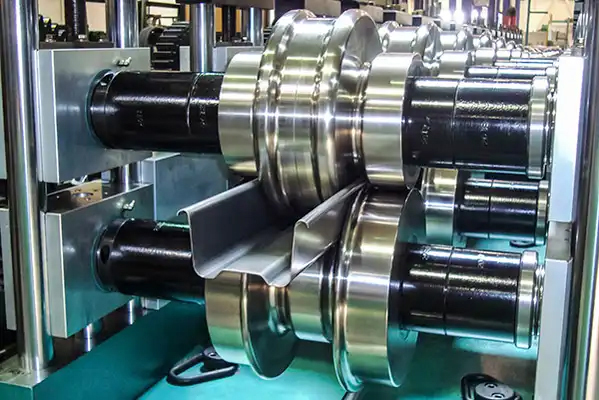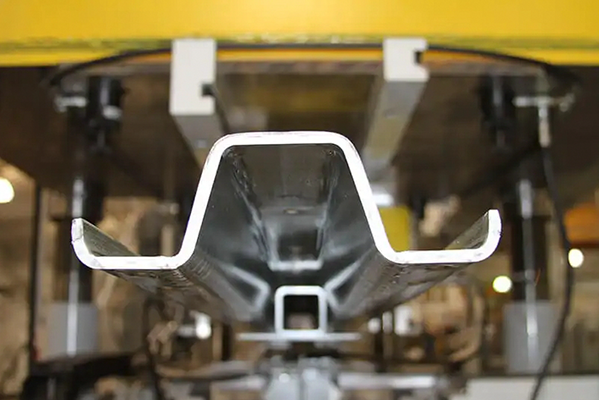Navigation Menu
Contact Us
- Email:
- info@wxavatar.com
- Address:
- Yurong Village, Yuqi Street, Huishan District, Wuxi, China.
Release Date:Apr 15, 2025 Visit:3 Source:Roll Forming Machine Factory
Rolling represents one of the most fundamental metal forming processes used in manufacturing industries worldwide. This mechanical deformation technique transforms metal stock into desired shapes and dimensions by passing it through rotating rolls. The process applies compressive forces that reduce thickness while increasing length or modifying cross-sectional profiles.
Basic Principles of Operation
The rolling process operates on simple mechanical principles. Two or more cylindrical rolls rotate in opposite directions, drawing metal stock through the gap between them. As the material passes through this roll gap, it experiences plastic deformation that permanently alters its shape. The amount of deformation depends on roll diameter, gap setting, and material properties. Most industrial rolling operations maintain constant volume, meaning reduced thickness results in increased length or width.

Primary Rolling Methods
Hot Rolling Process
Hot rolling occurs above the metal's recrystallization temperature, typically between 900-1300°C for steel. This high-temperature processing improves material ductility, allowing for greater thickness reduction per pass. The method produces scaled surfaces that often require subsequent finishing operations. Common hot-rolled products include structural beams, railroad rails, and thick plates.
Cold Rolling Process
Cold rolling performs at room temperature, creating products with tighter dimensional tolerances and smoother surface finishes. The process increases material strength through work hardening while reducing thickness by 50-90% from initial stock. Cold-rolled outputs find applications in precision components, automotive body panels, and thin-gauge sheet metal.
Equipment Configurations
Rolling mills vary in design based on production requirements. Two-high mills feature basic arrangements with two opposing rolls, while four-high configurations add supporting rolls to reduce deflection during processing. Cluster mills employ multiple backing rolls for ultra-thin gauge production. Modern tandem mills connect multiple rolling stands in sequence for continuous processing of strip products.
Material Behavior During Rolling
Metals undergo significant microstructural changes during rolling. Grain structures elongate in the rolling direction, developing anisotropic material properties. The process refines grain size and can improve mechanical characteristics when properly controlled. Different alloys demonstrate varying responses to rolling forces, with softer metals requiring less power but offering less strengthening potential.
Industrial Applications
Rolled metal products serve nearly every manufacturing sector. Construction utilizes rolled sections for structural frameworks and reinforcement materials. The automotive industry depends on rolled sheet metal for body panels and chassis components. Packaging manufacturers use thin-rolled foil for food containers and protective wrappings. Industrial machinery incorporates rolled bars and plates for component fabrication.
Process Advantages
Rolling offers several manufacturing benefits compared to alternative forming methods. The continuous nature permits high-volume production with consistent quality. Material utilization remains efficient with minimal scrap generation. The process accommodates a wide range of metals including steel, aluminum, copper, and specialty alloys. Modern computer controls enable precise dimensional control and repeatable results.
Quality Considerations
Successful rolling operations require careful parameter control. Roll surface finish directly impacts product quality, necessitating regular maintenance and polishing. Temperature uniformity proves critical in hot rolling to prevent uneven deformation. Lubrication systems must be optimized to reduce friction while preventing surface defects. Modern mills incorporate automated measurement systems to monitor thickness and flatness during production.

Recent Technological Advances
Contemporary rolling technology continues to evolve with industry demands. Computer-controlled hydraulic gap adjustment systems provide real-time thickness correction. Advanced roll cooling techniques extend tooling life and improve surface quality. Automated defect detection systems utilize machine vision to identify surface imperfections. These innovations enhance productivity while maintaining stringent quality standards.
Conclusion
The rolling process remains a cornerstone of modern metal forming, offering efficient mass production of semi-finished and finished metal products. Its versatility across material types and product forms ensures continued relevance in manufacturing. Properly executed rolling operations deliver consistent, high-quality metal stock for downstream fabrication processes across diverse industries. Ongoing technological improvements continue to expand rolling capabilities while maintaining cost-effectiveness in metal production.